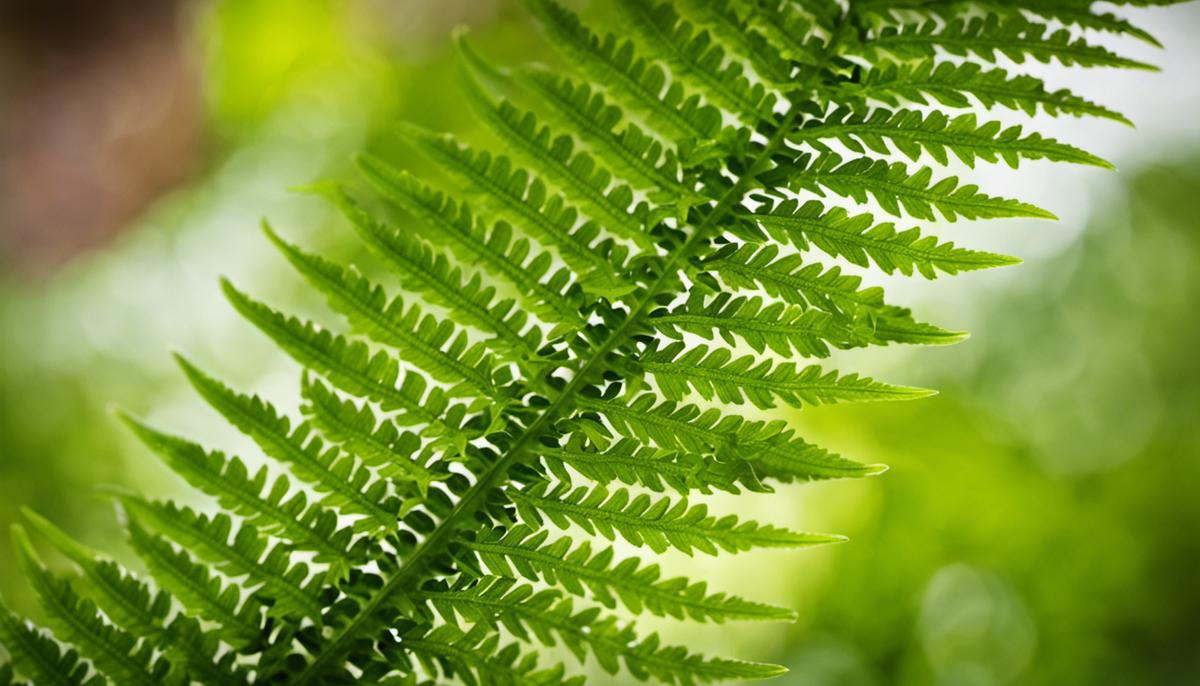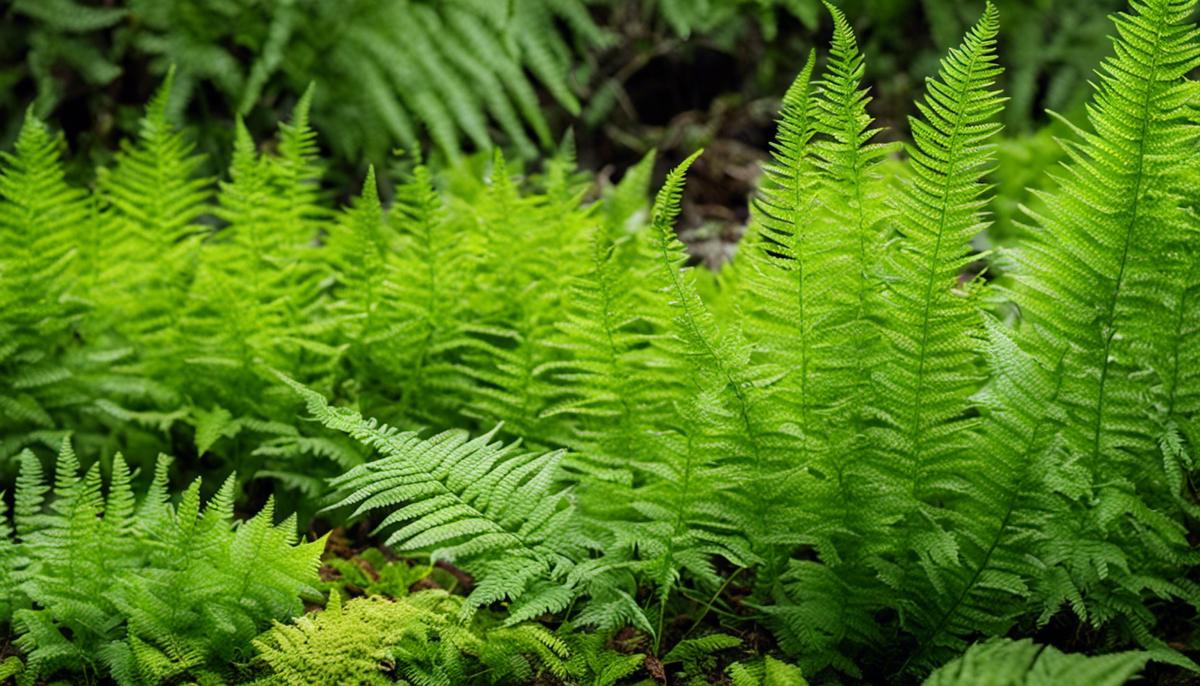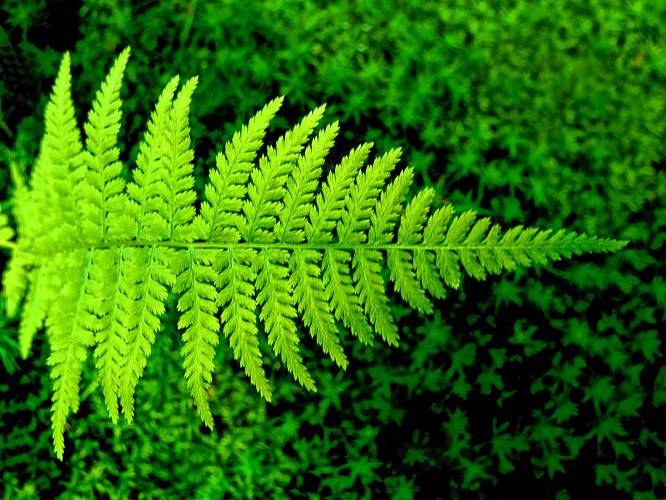

Agridisk
Egypt - Alexandria

What Are Ferns? The relationship between ferns and fern allies?
Description: Ferns, an intriguing and diverse group of plants, have fascinated botanists for centuries. Their distinctiveness, ecological significance, and complex life cycles are marvels within the plant kingdom. This write-up will offer a look into the fascinating biology of ferns, uncovering the unique structural morphology, life cycle modifications, and the myriad adaptations that have allowed them to thrive in different ecological niches around the globe. Alongside these ferns, there exist other equally intriguing groups of plants termed as 'fern allies.' Featuring species such as the club mosses, horsetails, and whisk ferns, the mysteries and insights that the fern allies hold add another layer of richness to the understanding of these ancient plant groups. In the vast landscape of plant biology, one group of plants sets itself apart with a unique blend of characteristics: the ferns. This article aims to explore the defining biological characteristics of ferns and to uncover the mysteries concealed within their intricate life cycles. Plants have fascinated us for centuries, and among them, ferns hold a distinguished place. They appear simple yet retain complexity in their biological processes that can intrigue even the most seasoned bio-scientist. Ferns are members of the plant division known as Pteridophytes, with over 20,000 species that vary in form and size. However, they all share several common characteristics. Renowned for their feather-like fronds, these are not mere outward adornments but integral parts of their biology. Each frond unfolds from a tightly wound spiral, known as a fiddlehead or crozier. This unfurling process, called "circinate vernation," is a notable trait of ferns. The fronds contain leaflets, or pinnae, and these contain subleaflet structures, or pinnules. These structures serve as the prime sites for photosynthesis. One of the defining characteristics of ferns is their lack of flowers or seeds — they reproduce through spores instead. Fern spores, microscopic unicellular structures, form beneath specialized leaf structures called sporangia, typically residing on the underside of the fronds. Interestingly, the release of these spores is determined by changes in atmospheric humidity. Turning to their life cycles, ferns follow an alternating heterosporous life cycle, which begins with a haploid spore. This aspect is where ferns truly exemplify their biological peculiarity. Contrary to popular belief, what we visually recognize as "fern plants" are but one phase in their dual-stage life cycle. Ferns participate in a dance between the gametophyte and sporophyte stages, each representing a specific phase of their life. The first phase, the gametophyte or prothallus phase, commences when a spore lands in a favorable environment and grows into a heart-shaped gametophyte, which is a separate organism from the fern plant. This gametophyte houses both male and female reproductive organs: the antheridia and archegonia respectively. Fertilization transpires when a waterborne sperm from an antheridium unites with an egg in an archegonium. Upon successful fertilization, the gametophyte phase concludes, giving rise to the sporophyte phase (the recognizable fern plant). The joined sperm and egg form a zygote, which grows into a new sporophyte fern, favored for its beautiful fronds. The sporophyte body forms fronds containing sporangia, which, in time, release spores and begin the life cycle anew. The fascinating life cycle of ferns reveals their resilience and adaptability, enabling them to inhabit varied ecosystems globally, from rainforests to desert fringes. The seemingly simplistic fern unfolds an intricate blend of characteristics, granting it distinction in the plant world. Through delving into the biological characteristics and life cycles of ferns, we step closer to nature's impressive artistry. Ferns, these ancient plants, not merely surviving but flourishing for over 350 million years, serve as testament to nature's extraordinary capability of evolution and adaptation. Understanding the biological peculiarities of such a complex group of plants reinforces our appreciation of the incredible diversity and intricacy in the plant realm. Always remember, the horizon of knowledge broadens as we venture deeper into the intricacies of the natural world. So, let's keep exploring, shall we? Having demystified the intricate life and reproductive cycles of ferns, we move beyond to acquaint ourselves with their fascinating associates - the 'fern allies'. These are groups of primitive vascular plants that share ties of antiquity with ferns while not being technically classified as ferns themselves. Club mosses (Lycophytes), horsetails (Equisetophytes), and whisk ferns (Psilophytes) figure predominantly in these ancillary ranks. Taking a closer look at these allies, their ties to ferns become more evident. Club mosses are ancient specimens that once towered in great forests during the Carboniferous period of the Paleozoic Era, back when our planet had a different countenance altogether. They evoke similarities with ferns through their spirally arranged, tiny, scale-like leaves that are compressed along their stems, and their spore-bearing cones at the tips. Their reproductive cycles also bear a resemblance to their fern compatriots, underscoring their shared lineage. The Equisetophytes, or horsetails, hold another intriguing connection to ferns. These living fossils, with their jointed, ribbed and hollow stems, create visual drama. It’s their underground creeping system, or rhizomes, which find a kindred link to ferns. This robust network essentially buttresses the life cycle system of these species just as it does in ferns. The third ally worth mentioning here is the whisk fern, from the Psilophyte division. These are simple plants with dichotomously branching stems bereft of true roots and leaves, which brings their ancient essence into focus. Analogous to ferns, they defy the angiosperm norm to reproduce via spores. What sets these 'fern allies' apart is the absence of the well-defined fronds seen in true ferns. Their leaf structure is simple in comparison, and the arrangement of sporangia tends to differ across these groups. Yet, the 'fern allies' more than make up for this with their unique lifecycle patterns and their shared propensity for spore-propagated reproduction, reminiscent of ferns. The 'fern allies' are reflective of an earlier stage in plant evolution, capturing the transition from simple to more complex structures and forms. The elaboration of spore-dispersed, independent life stages paints a rich tableau of life's unending pursuit of survival and propagation in diverse ecosystems, much like their stunning counterparts, the ferns. Evidently, the relationships in nature are far more intricate and nuanced than they seem at first glance. The affiliations of ferns and their allies underscore the evolutionary kinship ensconced within the plant kingdom. The 'fern allies', although CASUAL OBSERVERS might view them as mere side-notes, make a compelling case for curious scholars seeking patterns and consistencies in nature’s grand narrative. They remind us that every component, every process and every species in our biosphere serves a unique, irreplaceable role in maintaining this delicate equilibrium we call life. Having unraveled the mysterious biology and life cycles of ferns, let us proceed to delve deeper into their kinships - the fern allies. As implied by the term 'allies,' these groups of plants share numerous characteristics with ferns, but also display intriguing differences that are exclusive to their own kind. An examination into the fern allies offers a glimpse into the evolutionary narrative of the plant kingdom and our biosphere’s delicate balance. Among the most prominent fern allies are club mosses, horsetails, and whisk ferns. These diverse groups worthy of scholarly attention, exhibit a fascinating amalgamation of similarities and distinctions compared to true ferns. Club mosses, or Lycopodiophyta, share a rich heritage with ferns and carry some resemblances to their cousins. Though substantially smaller than most ferns, club mosses share the spirally arranged leaves and spore-bearing cones. Like ferns, club mosses adhere to a spore-propagated lifecycle. Horsetails or Equisetophyta, another prominent group of plant species, also align with fern behavior by having an underground creeping system termed rhizomes. This vast network of horizontal roots allows horsetails to form colonies, promoting survival and propagation. The third group, whisk ferns or Psilotophyta, diverges from ferns in notable ways. These plants, displaying a remarkable simplicity, lack true roots and leaves favoring dichotomously branching stems. Spore reproduction, however, remains a common thread binding them to ferns. Pivotal differences distinguish fern allies from true ferns, setting them apart in the grand tapestry of the plant kingdom. An absence of well-defined fronds, simpler leaf structures, and the different arrangements of their sporangia highlight the unique evolutionary paths these plants have traversed. Our exploration captures a snapshot of the varied and intricate relationships within plant evolution. These 'fern allies' represent an earlier stage in plant evolution, offering a captivating glimpse into the primordial history of plant life on Earth. Going beyond their superficial characteristics, their spore-propagated reproduction system is key to their survival. It is a testament to nature's tenacity, continually adapting and evolving to the ever-changing scenario of our biosphere. It reminds us that each species, no matter how minute or seemingly insignificant, holds a pivotal role in maintaining the harmony of life in our shared space. Exploration into fern allies among studies of their shared and unique characteristics not only uncovers fascinating realms of plant life but also underlines the profound evolutionary kinship within the plant kingdom. A humble fern or an understated club moss might seem trivial in the grand scheme of things. However, deep beneath the surface lies a dynamic narrative of evolution and symbiosis, signifying the magnitude of every living being and process in shaping and sustaining our vibrant biosphere. Such understanding underscores the importance of conservation and the mindful stewardship of our planet's diverse flora. It enhances our appreciation of the seemingly usual and leads us to cherish the beauty and importance of each element in the world of plants, largely enriching our understanding of life and its complex, wondrous nature. We walk away from this exploration with a richer appreciation of ferns and their allies and a deeper understanding of their complex interrelationships. Beyond providing aesthetic appeal in our gardens and homes, these plants have crucial roles to play in our ecosystems. From participating in nutrient cycling to influencing the distribution and diversity of associated fauna, ferns and their allies certainly are more than just ornamental species. Their symbiotic associations, whether mutualistic or parasitic, adds a final brushstroke to the intricate and vibrant picture we have painted of the life of ferns and fern allies. As we continue to study and appreciate these plants, we also continue our own growth in the understanding of the world around us. Fern plants are plants that do not contain flowers, they have roots, stems and leaves, and yet they also do not contain seeds, however they reproduce sexually through small spores or sometimes they can reproduce vegetative, and they can reproduce by producing spores, on Like flowering plants, in the past ferns were loosely grouped with other spore-bearing vascular plants. These plants are called fern allies. Recent genetic studies have revealed many relationships between ferns and allies. There is a close relationship between ferns and fern allies, and despite the relationship, the daughters called fern allies, mosses, and pinnate daughters are not related to ferns at all, but assist them in reproduction.Understanding the Biology of Ferns
Biological Characteristics and Life Cycles of Ferns: An In-Depth Analysis

Exploring Fern Allies

The Fascinating Symbiosis between Ferns and Fern Allies


The relationship between ferns and fern allies